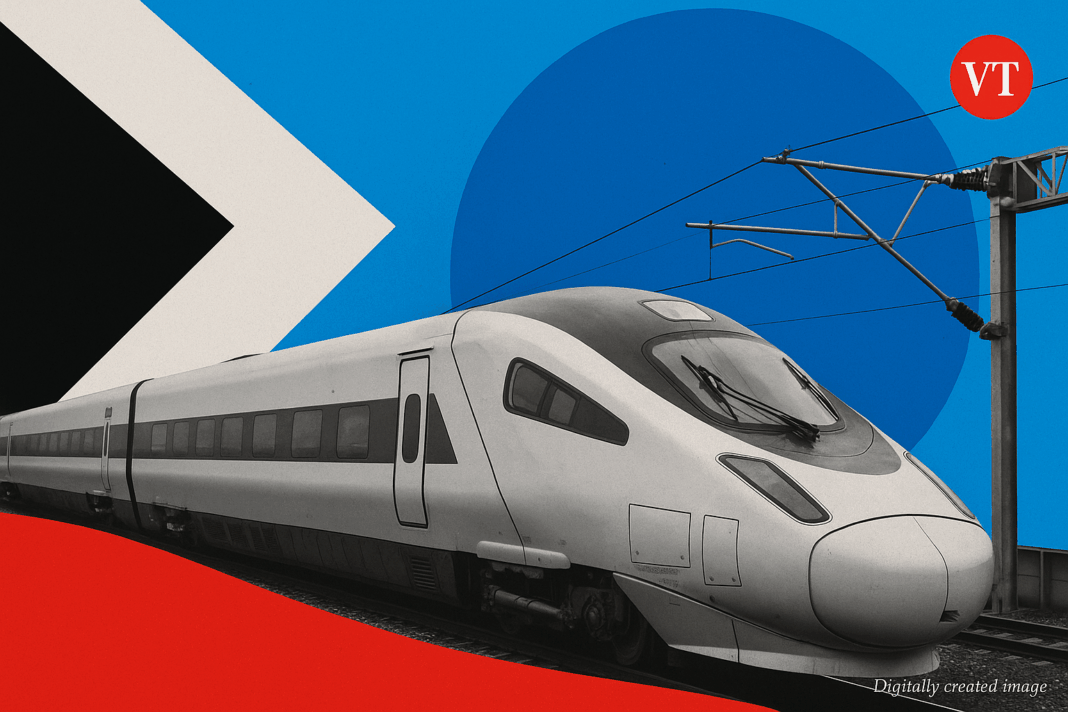- HS2’s ultra-high-speed design blamed for spiraling costs and delays.
- Budget ballooned from £33 billion in 2010 to over £100 billion in 2025.
- Timeline for Phase 1 pushed from 2026 to at least 2031.
- Experts argue conventional high-speed targets could have saved billions.
- Public sentiment shifting, with majority favoring cancellation or scaling back.
The United Kingdom’s High Speed 2 (HS2) rail project has run tens of billions of pounds over budget and faces years of delays, with experts now pointing to one core design flaw: it was engineered to be faster than necessary.
Originally envisioned as a transformative infrastructure project linking London to major cities in the Midlands and North, HS2 was designed to reach speeds of up to 360 km/h (224 mph). But critics say that ambition came at a steep cost — both financially and logistically.
Speed vs. Practicality
According to Professor Stephen Glaister, former chair of the Office of Rail and Road, the decision to prioritize ultra-high-speed travel added significant complexity to the project. In his 2023 policy paper, Glaister argued that “the pursuit of speed has driven up costs in nearly every aspect of HS2’s design.”
He added that had the project aimed for more conventional high-speed standards — around 250 km/h — it could have delivered similar journey time improvements at a fraction of the cost.
Budget Blowouts
HS2’s initial budget was estimated at £33 billion in 2010. As of 2025, the projected cost has ballooned to over £100 billion, with only partial completion expected by the early 2030s. The eastern leg to Leeds has been scrapped entirely, and the Birmingham-to-Manchester section remains under review.
A 2020 progress update from the UK’s National Audit Office (NAO) found that “the Department and HS2 Ltd have not adequately managed the risks to value for money… optimistic estimates were used to set budgets and delivery dates.” The report also noted that cost pressures were evident as early as 2016, but were not publicly disclosed until years later.
Transport Secretary Heidi Alexander acknowledged the challenges in a statement to Parliament last week: “While HS2 remains a vital investment in Britain’s future, we must confront the hard truths about its execution. Lessons must be learned.”
Timeline Slippage
The first phase of HS2 — from London to Birmingham — was originally scheduled to open in 2026. That date has now been pushed to 2031, with further delays likely. Construction setbacks, inflationary pressures, and land acquisition disputes have all contributed to the slippage.
Policy Reassessment Ahead
The revelations have sparked renewed debate over the UK’s infrastructure priorities. Some MPs are calling for a full inquiry into HS2’s planning decisions, while others advocate for redirecting funds toward regional rail upgrades and climate-resilient transport.
Public Sentiment Shifts
Public support for HS2 has waned in recent years. A YouGov poll conducted in June found that 58% of respondents believe the project should be scaled back or cancelled, citing environmental concerns and fiscal responsibility.
Despite the setbacks, proponents argue that HS2 still holds long-term value — if recalibrated. “We can’t afford to abandon high-speed rail,” said Labour’s Shadow Transport Minister. “But we must build it smarter.”
(with inputs from Institute for Government, NAO, and Construction Review Online)
A global media for the latest news, entertainment, music fashion, and more.















